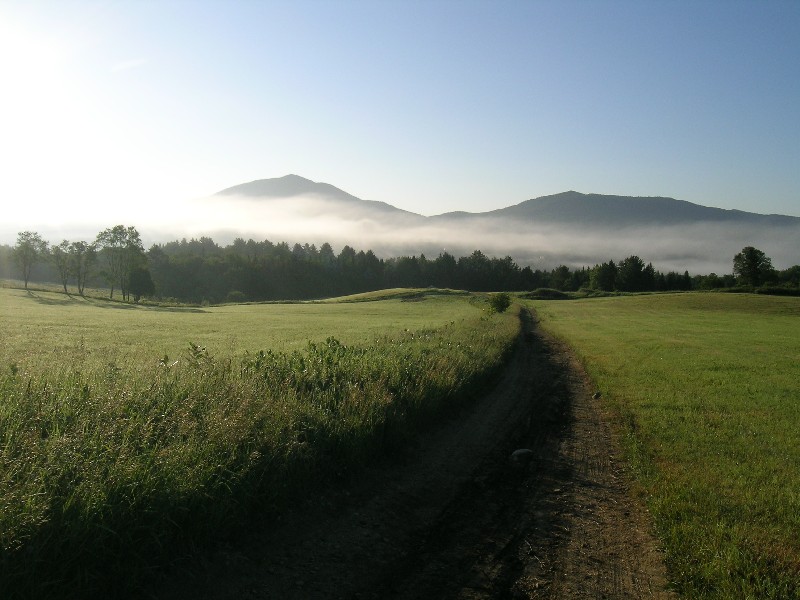Les Kingdom Trails, au Vermont, ouvrent en fin de semaine. L’an dernier, l’ouverture fut retardée en raison de la pluie. Il a fallu aussi fermer à une autre occasion et les administrateurs ont eu un petit peu de misère à faire respecter cette fermeture avec des groupes de Québécois, déçus de s’être déplacés pour rien.

Voici une petite entrevue réalisée l’automne dernier avec CJ, administrateur des KT.
Gilles: In the past years, how often did you have to close the trails in one season?
CJ: In past years we never really «officially» closed the trails due to weather. It wasn’t until our amount of users started to really grow that we had to close the trails when it rained. Now, with the large number of riders coming to use the trails on any given day, we need to close them or the trails would just get hammered. Years ago we just assumed people would stay off the trails when the conditions where poor. Since then, we’ve only closed the trails a couple times a year. A lot of times, when we re-open the trails after a rain, we will still keep the mountain side closed for a day or two longer. The Darling Hill Ridge is a much sandier soil and drains beautifully, whereas the trails over on the Burke Mountain side are muddier and tend to take a little longer to dry out.
Gilles: In general, do people respect the closure of the trails?
CJ: I think so. For the most part you can see the the parking lots are not as full as they would be if it were sunny out. The cars and people who are here when the weather is poor must be going somewhere. We try and talk to most of them and give them alternate routes, ie dirt road loops and such, to try and keep them off the singletrack, but we know some still go and explore the trails. Once those that do go out when the trails are closed, they see why we chose to close them.
Gilles: How much time do your crews work just maintaining the existing trails vs erosion?
CJ: I’d say almost half, if not more… erosion is always a problem. If it’s not a down tree or limb that we are going out to get, than it’s making a new re-route or new trail altogether because of an erosion or drainage issue. With all the trails we build, trying to avoid low lying wet spots and steep drainage areas are a priority. Still, over time these problems sometimes arise and need to be addressed. Many of our older trails were built before we had much knowledge of the correct grade of a trail and proper drainage, so we’ve re-routed many of the old trails from their original location.
Gilles: By the way, do you have employees that are paid to work the trails?
CJ: Yes. We have a part time Trail Manager during the spring/summer months, and usually one other paid trail worker/information specialist, as well as myself. Generally we have an intern or two during the summers who also are on our trail crew.
Gilles: Do you have «chore» days, where volunteers can come and give a helping hand?
CJ: Sure do. The first Sunday of every month from about May-October, we have a Volunteer Work Day. We meet at 9:00 a.m. at the Darling Memorial Park, just north of the village of East Burke, on the left on Route 114. We provide tools and the job, just bring appropriate attire. We usually wrap up the day around 1:00 p.m. We also always have various camps, school groups and clubs volunteer their time on the trails through out the summer. Feel free to contact us if any group is interested on helping out. We usually always have some sort of project that can use extra hands. The Programs & Events page on our website also has postings of various activities.
Gilles: How much time do you spend developing new trails?
CJ: We generally do scouting for new trail possibilities during the spring or fall, before the leaves come out or after they fall. That way you can see the contour of the land and where the better spots are to construct the trail. We can spend days in one area looking for the perfect place for a new trail.
Gilles: Is your system complete or do you plan to add new trails?
CJ: I don’t know if our trail system will ever be complete, we are always looking for new places to put new trails. It’s just a matter of the landowner and if they are willing to let us put a trail on their property. Many times we have landowners come to us asking for a trail to be put on their land. We wouldn’t have this trail system if it weren’t for our generous landowners. It takes a community to build a trail system.

